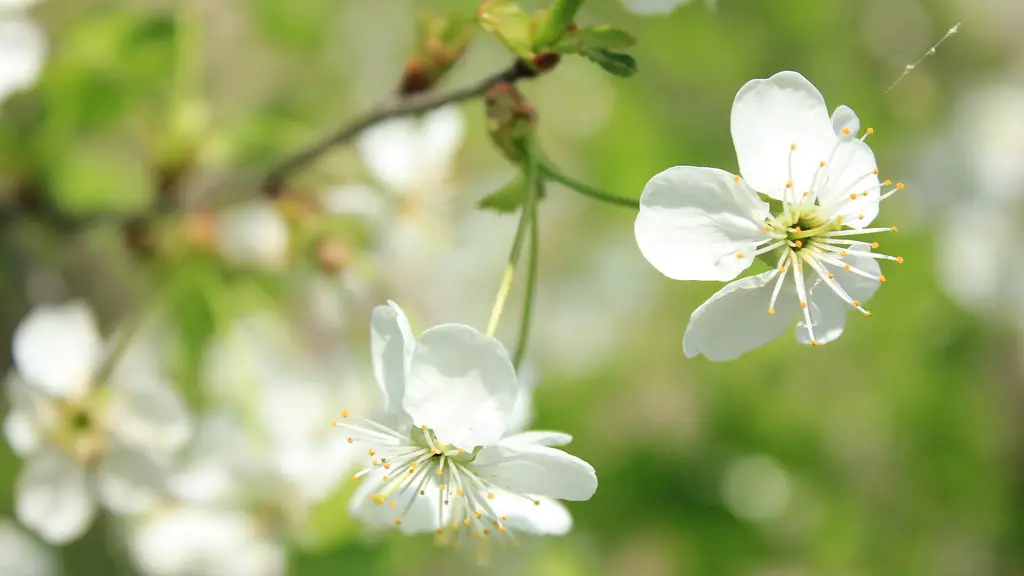What Is the White Stuff on My Palm Tree?
If you have recently seen white chalk-like spots on your palm tree’s trunk or leaves, then you might be wondering what it is. This white, powdery substance is called palm sooty mold.
Palm sooty mold is caused by microscopic insects called aphids, scale, and other sap-feeding insects. These pests feed on the sap of the palm tree, often on the softer new foliage, and secrete a sugary substance known as honeydew. This honeydew attracts the mold, which is made up of a network of fungi that often turn white when exposed to the elements.
The sooty mold is a secondary problem that exists because of the presence of the pests. It is not infectious itself, and contrary to its name, it is not made of soot! The most common way people become aware of this mold is when they see the white, chalky-looking patches on their palms. The presence of these patches is an indicator that some kind of pest is present.
Identifying and Treating Affected Palms
Aphids, scale and other sap-feeding bugs are usually found in areas of high humidity. Infested palm trees usually display symptoms such as yellowing or browning of leaves and frond tips, sticky substances on leaves and stems, and the presence of white spots or splotches.
Sooty mold can be hard to remove as it is attracted to the honeydew secreted by the sap-feeding pests. Treating the palm tree should involve some kind of insecticidal spray, preferably natural, as well as the removal of any nests or colonies of the pests. It is important to get rid of the sap-feeding pests to avoid the mold from forming again.
Once the pests have been removed, the sooty mold can be cleaned off with a soft brush or water pressure. It is important to make sure all spores are removed, as if left untreated, the mold will grow back quickly.
Preventing Further Infestation
To prevent further infestation, periodic detection and horticultural maintenance of the palm trees is necessary. Regular inspections should be carried out to detect the presence of sap-feeding insects. If they are present, they should then be eliminated as soon as possible.
Maintaining the palm tree’s health is important as it helps to keep the pests away. Regular fertilizing, pruning, and proper irrigation will help to keep the palms strong and healthy. It is also useful to keep the area surrounding the palm tree clear of debris, as this can provide a breeding ground for the pests.
Finally, it is always important to consult a professional if the problem persists. They can provide professional advice and help to identify and treat the sooty mold as well as provide advice on how to prevent future infestations.
The Chemical Side of Things
Sooty mold tends to form in dry climates, often caused by insecticide or fungicide applications. This can occur when chemical sprays are used to kill the pests, but it often has other ill effects. Chemicals have the potential to cause damage to beneficial insects as well as the health of the plant, often leaving an unhealthy residue on the plant.
It is important to identify the type of pest before choosing a pesticide. For example, some types of sooty mold can be killed with a fungicide but this won’t help with aphid or scale infestations. The right type of pesticide should be used where necessary, and in an area where the pesticide won’t be exposed to wind or rain.
As well as using a pesticide, it is also important to monitor the affected area. Damage from the pest should be noted and any changes in the environment should be monitored. This helps to track the effects of the pesticide, which can then be tweaked if necessary.
Sooty Mold as an Indicator
Sooty mold on palm trees is an indicator of a pest infestation and it should be treated as soon as possible. If the mold is left untreated, it will continue to spread and can eventually cause permanent damage to leaves and stems. It is important to identify the source of the problem, often sap-feeding insects, and to treat it accordingly.
It is also important to keep the palm tree healthy to prevent pests from returning. Regular fertilizing, pruning, and proper irrigation will help to keep the palms in perfect condition, and periodic detection and treatment of pests are useful methods of prevention.
Finally, chemicals may be necessary in certain cases, but should be used with caution. Before using a pesticide, it is important to identify the type of pest and to use the right type of product in an area where it will not be exposed to wind or rain.
Restoring Health to Affected Palms
Once the infestation is treated and the mold is cleaned off, the palm tree should begin to look healthier. Keeping up with regular inspections and horticultural practices, as well as avoiding chemical treatments, will help to keep the palm free from pests.
Maintaining healthy palms is the best way to prevent infestations and sooty mold from returning. If the correct measures are taken, the palm should remain healthy and the mold should never return.
Biological Treatments Are an Option
In recent years, more people have been turning to biological treatments to help fight sooty mold. Natural insect repellents, such as spray-on products, have been gaining traction in recent years, as they offer an effective alternative to chemical treatments.
Biological control is the use of natural predators such as ladybugs, wasps, and parasites to control pest populations. These predators eat the pests and keep them away from the plants. This natural approach offers an effective solution to controlling the pests and it avoids the use of chemicals.
Biological control can also be used in combination with other treatments. For example, if the sap-feeding pests are still present after a biological control treatment, then chemical sprays can be used to finish off the job.
Organic Treatments
Organic treatments are another popular way to combat pests, including sooty molds. Natural repellents, such as garlic and neem oil, can be sprayed on the palm trees and can help to keep the pests away. These natural products are also less harmful to beneficial insects, so they are a better option than chemical treatments.
Organic treatments can also be used in combination with mechanical measures, such as physical removal of pests. Trapping, vacuum systems, and other methods are all effective in getting rid of pests. It is important to note that physical removal of pests can be labour-intensive, so it should be used in combination with other treatments.
Organic treatments can help to keep sooty mold in check, but it is important to act as soon as possible if you see any signs of infestation. Prompt response is the key to controlling the pests and preventing a takeover.



